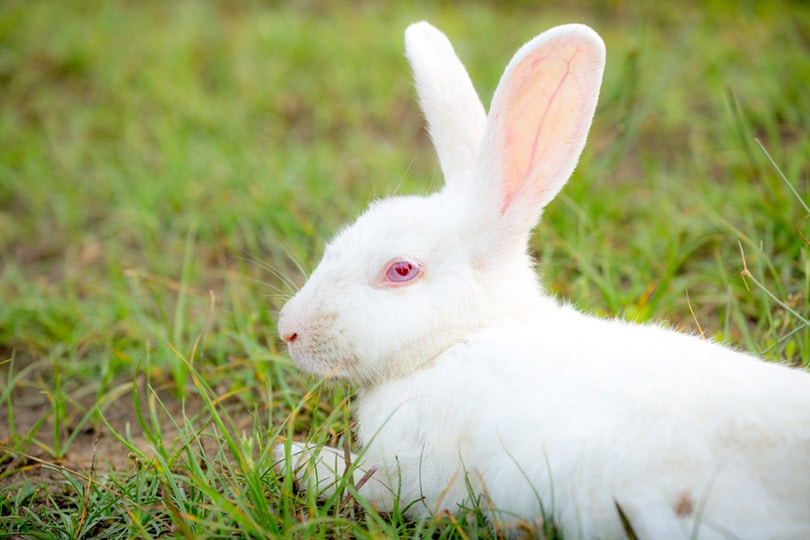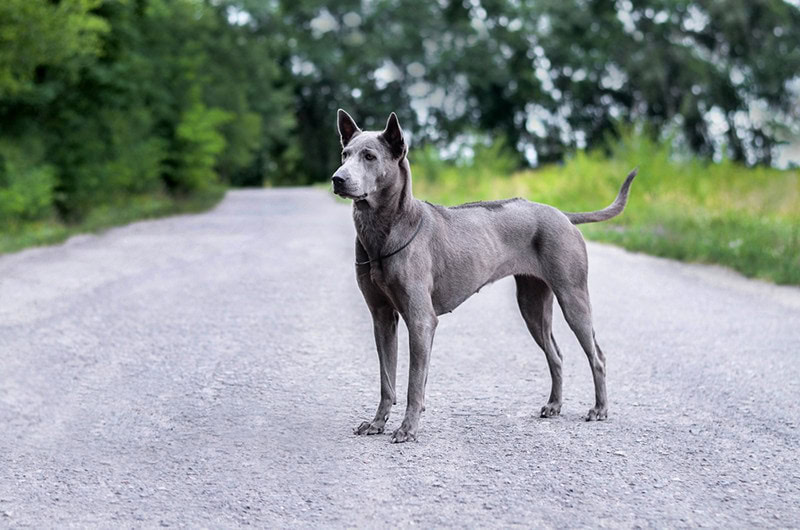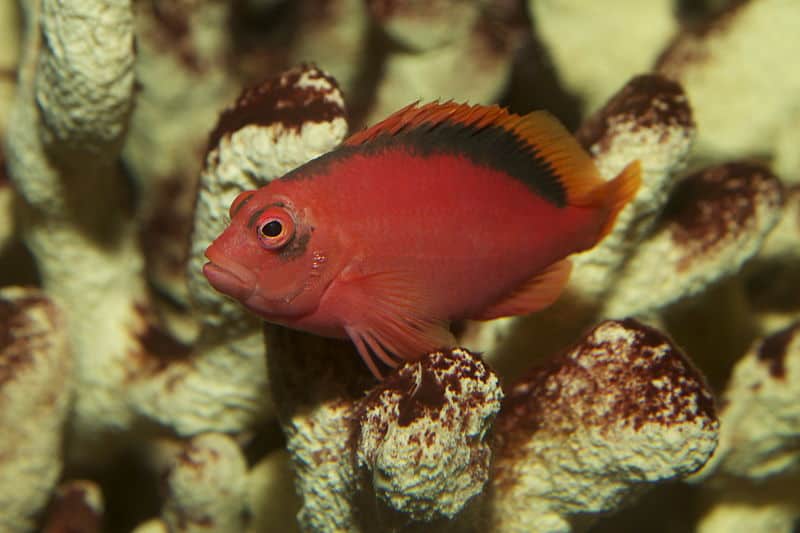Click to Skip Ahead
Satin rabbits are among the most popular domestic pet rabbits, standing out from others due to their stunning, shiny coats. These medium-sized bunnies initially came in two colors but have been developed to have over 11 colors.
Nowadays, you can encounter these rabbits as pets throughout the U.S.A. and the rest of the world. They have gentle, docile, and friendly personalities, so they make excellent furry companions.
In this article, we talk more about Satin rabbits, including their care, temperament, habitat, and traits. Be sure to consider their characteristics and needs before determining if one would be a suitable pet option for you.
| Size: | Medium |
| Weight: | 6–11 pounds |
| Lifespan: | 5–9 years |
| Similar Breeds: | Netherland Dwarf, Havana Rabbit, Mini Satin Rabbit |
| Suitable for: | Singles, couples, families, people of all ages, regardless of rabbit care experience |
| Temperament: | Calm, docile, friendly |
The coat of the Satin rabbit is what singles them out from other breeds. They came from the Havana rabbit, as it’s a gene mutation that forms their extremely shiny coat.
A breeder, Walter Huey, discovered these rabbits in 1934. He noticed that in a litter of Havana rabbits, a few of the bunnies had satin-like fur. A later evaluation revealed that a recessive gene mutation caused the unusually shiny coat. For this reason, the National Havana Club recognizes the Satin rabbit as a separate breed.

Satin Rabbit Characteristics
How Much Do These Rabbits Cost?
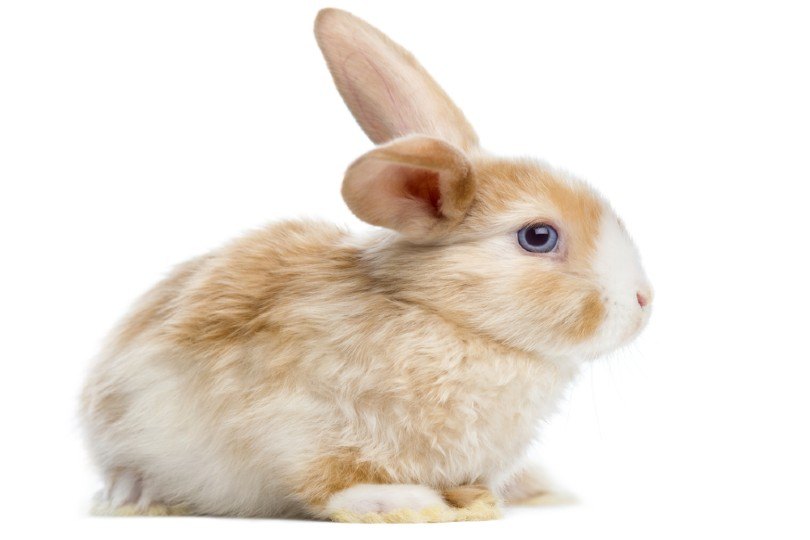
Satin rabbits were first discovered in the U.S.A. but quickly spread to the U.K. and the rest of the world. Since they’re quite popular, this domestic rabbit breed is often inexpensive. The price of these bunnies in the U.S.A. typically shouldn’t be more than $100.
That said, you’ll need to spend additional money on providing a proper hutch, food, and toys for your pet and creating a designated rabbit run. Still, these costs aren’t typically that high, as Satin rabbits are low maintenance.
Temperament & Intelligence of the Satin Rabbit
Do These Rabbits Make Good Pets?
Satin rabbits make excellent pets due to their calm, docile, and friendly nature. They are typically sweet and well-mannered, so they can easily adjust to all kinds of environments and people of all ages.
They are also intelligent, but it takes dedication and patience to properly socialize them and learn how to handle them as family pets. As long as you provide your Satin rabbit with enough love and care, though, you can expect to get a gentle, playful companion that loves spending time with you and your loved ones.
These bunnies are active during the day and love to explore their surroundings. If you’re keeping them indoors, ensure that there are no cables or dangerous things that they may accidentally chew on.
Their docile nature makes Satin rabbits excellent pets, but remember that they may bite or scratch when they feel provoked. This is something to be cautious about if you have children. Families with kids who want to own a Satin rabbit should teach them how to handle the animal gently to prevent possible mishaps.
Does This Rabbit Get Along With Other Pets?
Rabbits are social animals that typically like to have companionship. That said, like most rabbit breeds, Satins get along the best with other rabbits similar in size. They might also get along with other, smaller animals, such as guinea pigs.
It’s also possible for a rabbit to get along with dogs, but remember that canines and felines are natural predators, so your rabbit may be scared of them.
You should always supervise your rabbit’s encounters with other animals, even if it’s another rabbit; two unknown male rabbits may take a while to get used to one another and may fight until that point.

Things to Know When Owning a Satin Rabbit
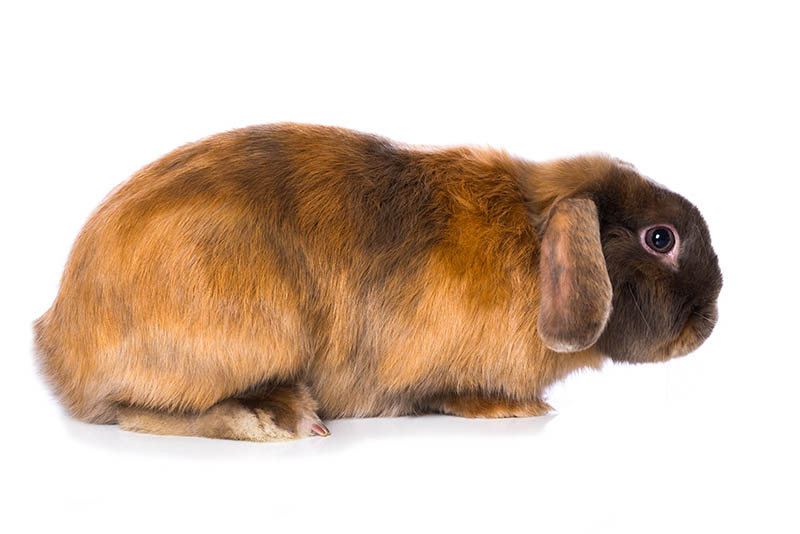
Appearance & Colors
Originally, Satin rabbits were found in two primary colors: white and grayish. The color of their coats was developed further over time, and there are now over 11 unique colors in this breed.
In fact, the colors of these bunnies can vary depending on the countries that they’re bred in:
- S.A.-recognized satin rabbit colors: Red, copper, Californian, broken
- K.-recognized satin rabbit colors: Brown, ivory, lilac, lynx, cinnamon, opal, orange, fawn, Havana, squirrel, seal, smoke pearl, fox, bronze, beige, Argente, Himalayan, sooty-fawn
- Common satin rabbit colors in other countries: Black, chocolate, blue, white, Siamese, otter, chinchilla
These rabbits have wide, muscular bodies, strong legs, and shiny coats. Their appearance can vary based on their country of origin. U.S.A. satin rabbits tend to have short and erect ears, while the ears of U.K. Satin rabbits are typically medium and erect. Also, the rabbits of this breed in the U.K. are usually smaller than those in the U.S.A.
Food & Diet Requirements 🥕
One of the most important things when keeping any animal as a pet is providing them with a proper, well-balanced diet. A Satin rabbit’s food and diet requirements are the same as those of any other rabbit.
They require a constant supply of fresh, high-quality hay or grass, a small number of pellets, and leafy greens. Here’s a list of tips to ensure that your Satin rabbit gets the appropriate diet:
- Always provide high-quality hay or grass.
- Offer fresh, clean leafy greens to your rabbit every day.
- Ensure that your rabbit has constant access to clean drinking water.
- If and when giving pellets, follow the manufacturer’s guidelines.
- Avoid giving muesli-style food to your rabbit.
- Adjust the food quantity to prevent your rabbit from becoming overweight/underweight.
- Offer other veggies and fruits as occasional treats.
If you are still unsure what and how you should feed your Satin rabbit, consult your vet.
Habitat & Hutch Requirements 🏠
Like all rabbits, Satins need plenty of free space to play, stretch, run, and explore freely without getting in danger, so you’ll need to provide a suitable hutch for your bunny.
A general rule of thumb is that a Satin rabbit should have a hutch that’s at least four times bigger than them. You should also create a rabbit run or an outdoor obstacle course where your pet can exercise and spend free time.
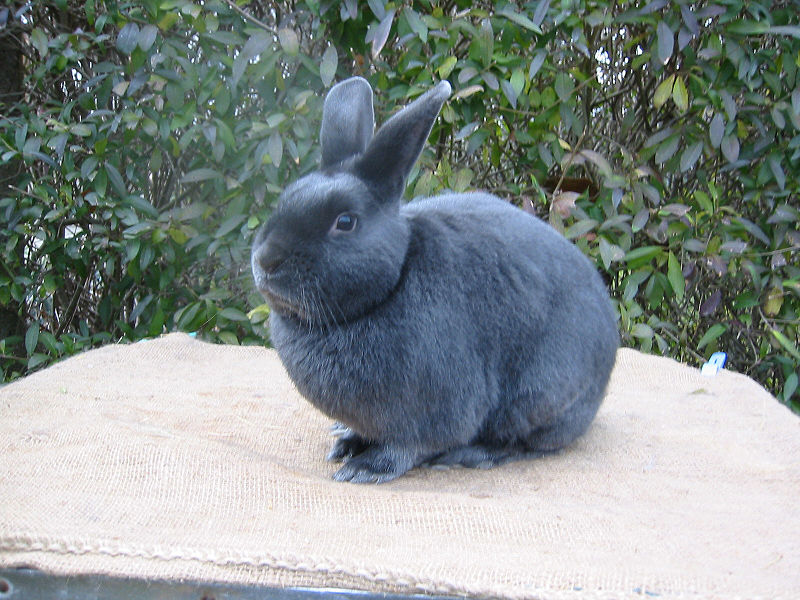
Exercise & Sleeping Needs 🐇
Like most other breeds, Satin rabbits need at least 4 hours of exercise a day, including running, hopping, and jumping. Their play space should be as big as possible to encourage your pet to exercise. To make things interesting, you can add various features to this space, such as:
- Tunnels
- Hide holes
- Platforms
- Access to an outside grassy area
- Sheltered area
Satin rabbits will require constant supervision when exercising or exploring the outdoors beyond the designated play area or rabbit run.
As for their sleeping needs, these bunnies require between 8 and 14 hours of sleep daily to grow healthy and develop properly. You should provide them with a dark hiding spot where they can rest until they’re ready to play again.
Training 🥎
Satin rabbits are intelligent, but they can be hard to train at times, which is why you’ll need to start from a young age. The training for your bunny should include the following:
- Crate training: It’s best to provide your Satin rabbit with a large hutch where they can freely roam and explore their surroundings. Since this will be where your pet eats and sleeps, it’s essential to help them adjust through crate training.
- Socialization: Early encounters and experiences will significantly impact how your rabbit will behave, so you’ll need to socialize your Satin from a young age and introduce them to other animals and humans. Remember to do all these things gradually, but never keep your pet unsocialized. Otherwise, you risk having an aggressive rabbit due to a fear of people or other animals.
- Potty training: It’s typically easy to train Satin rabbits to go potty in a litter box. After you create their designated potty area, take their droppings, and place them in the litter box. This will encourage your pet to use the potty at that same spot, as they will recognize it by scent.
- Walking on a leash: Satin rabbits are extremely intelligent, so you can teach your fur baby to walk on a leash.
Grooming ✂️
Satin rabbits have moderate grooming needs. You should regularly brush your rabbit to prevent shedding and tangles, especially during the shedding season. It’s also advisable to clean their eyes, nose, ears, and mouth with a soft, moist cloth to prevent mites.
Satin rabbits don’t require bathing unless requested by a veterinarian. However, to keep up their hygiene, you can use a soft, wet cloth to clean their bottom. Also, trim your pet’s nails regularly to prevent them from overgrowing.
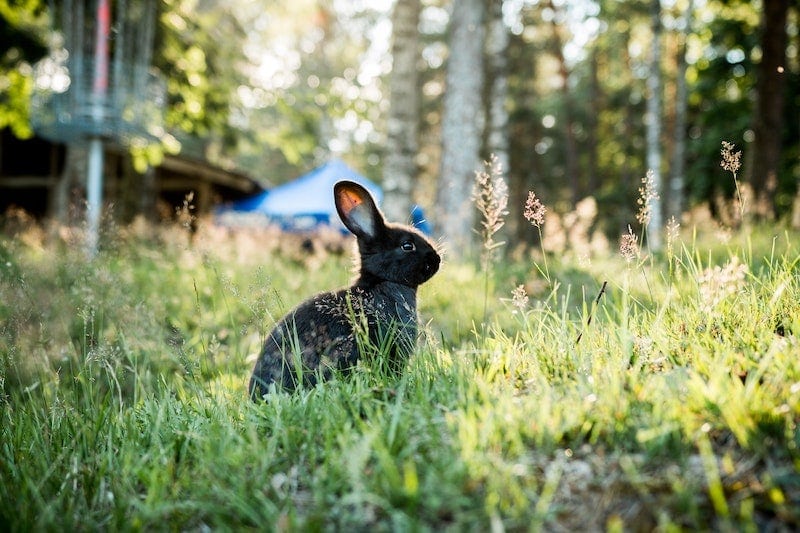
Lifespan and Health Conditions 🏥
Satin rabbits generally have shorter lifespans than most other breeds, commonly living for about 5 years. However, with proper care, nutrition, and a clean, peaceful living environment, they can surpass their life expectancy and live up to 8–9 years. If you don’t take proper care of your Satin, they may become malnourished or sick or die prematurely.
To adequately take care of your bunny, you’ll need to know about the possible health conditions that your furry companion may experience.
Serious Conditions
1. Flystrike
Flystrike can occur in any rabbit species, including Satins. This health problem happens when a fly lays eggs on your rabbit’s fur; the eggs later hatch into maggots, causing extensive damage to your pet and their skin.
- Maggots in the fur or under the skin
- Fur loss
- Patches of wet fur
- Open wounds
- Lethargy
- Decreased appetite
- Foul smell
- Collapse
Since this condition can cause severe harm to your Satin rabbit, be sure to take your pet to the vet right away.
2. Overgrown Teeth
The teeth of all rabbits constantly grow, which is why they are prone to overgrown teeth, leading to dental disease. This condition can occur in all breeds, including the Satin. Overgrown teeth can cause pain while eating, the development of abscesses or sores inside the mouth, excessive drooling, and difficulty eating.
Fortunately, most of these problems can be prevented if you provide your bunny with fresh, high-quality hay and pellets to help them wear down their teeth and keep them in good shape.
Minor Conditions
1. Bladder Problems
Satin rabbits are susceptible to bladder problems and UTIs that can occur due to various reasons. The signs may be visible in some rabbits but invisible in others, so it’s always good to have your pet tested if you suspect a bladder-related health issue.
- Increased urination
- Painful/uncomfortable urination
- Hunched posture while urinating
- Thick urine
- Difficulty moving
- Lethargy
Although bladder problems in rabbits are considered a minor condition, you should still take your pet to a vet to ensure that there are no underlying health problems.
Male vs. Female
Most male and female Satin rabbits are similar and often hard to tell apart. That said, males tend to be slightly larger and heavier. Also, it’s common for female Satins to be more protective due to their maternal instincts. They can also become moody and irritable during the mating season.

3 Little-Known Facts About the Satin Rabbit
1. Satin Rabbits Originate From Havana Rabbits
Satin rabbits originate from Havana rabbits. Breeder Walter Huey found a few different-looking rabbits in his Havana rabbit litter. They had satin, shiny coats, which were later discovered to be the result of a gene mutation.
Since these bunnies had a different color gene, they were recognized as an entirely different breed and named Havana Satin rabbits. Nowadays, these rabbits are known simply as Satin rabbits.
2. Satin Rabbits Are Not Entirely the Same in the U.S.A. as in the U.K.
Although Satin rabbits in the U.S.A. and the U.K. are the same breed, they don’t look exactly the same. Several small aspects set them apart.
Here’s a chart showing the differences.
| Characteristics | Satin Rabbits (U.S.A.) | Satin Rabbits (U.K.) |
| Weight | 8–11 pounds | 6–8 pounds |
| Ear shape | Short and erect | Medium and erect |
| Recognized colors | Red, copper, Californian, broken | Brown, ivory, lilac, lynx, cinnamon, opal, orange, fawn, Havana, squirrel, seal, smoke pearl, Argente, fox, bronze, beige, Himalayan, sooty fawn |
3. Satin Rabbits Are Not the Same as Mini Satin Rabbits
Some people may mix up Satin rabbits with Mini Satin rabbits; however, these are not considered the same species. While Satin rabbits came from Havanese rabbits, Mini Satins came from breeding Satin rabbits with Polish or Netherland Dwarf rabbits.
Unlike Satins, which are common, Mini Satin rabbits are quite rare. Therefore, they were among the latest rabbit breeds to get recognized by the American Rabbit Breeders Association, in 2005.

Final Thoughts
Satin rabbits are among the most popular rabbit pet breeds in the U.S.A. and the UK. These stunning critters are known for their shiny fur and loving personalities that enable them to easily adapt to all kinds of environments.
This breed is an excellent pet choice for anyone interested in caring for a rabbit, though they can also be show bunnies or therapy animals. Overall, their docile and calm personality means a Satin rabbit will bond with humans easily, and with proper care, they can be a lovable companion for years to come.
Featured Image Credit: Katesalin-Pagkaihang, Shutterstock
